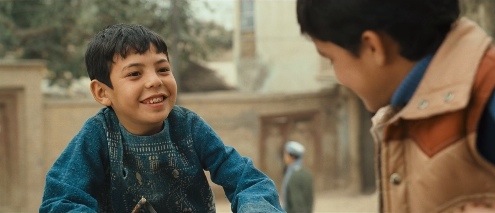The novel’s opening establishes a highly personal, intimate first person narrative voice that has distinctive qualities. It is very much a speaking voice, with fragmented sentences (‘Because the past claws its way out’) that lend it an informal, conversational quality. It is also serious and reflective in tone: ‘I became what I am today…’ and ‘I thought of the life I had lived…’ are pensive, perhaps heavy. We may sense a cathartic quality beneath the surface of the language, as if the narrator is somehow cleansing himself of past events through the act of storytelling.
Secondly, there are a number of unanswered questions posed by the beginning, most obviously: What was it that happened on that day in the winter of 1975? How did it ‘change everything’? The answers are hinted at; we can infer from the ‘overcast’ and ‘frigid’ weather that it was a negative experience, and the mention of a ‘past of unatoned sins’ hints at a guilty act, a shameful ‘sin’ of unspeakable nature. We must continue reading to find out the precise nature of this sin.
In terms of setting, it is clear that we are in the real world – references to actual places such as ‘Golden Gate Park’ in ‘San Francisco’ make this clear. It is not explicitly stated, but we may well deduce that the past events of the winter of 1975 occurred in either Kabul or Pakistan, as someone called ‘Rahim Khan’, calling from Pakistan, is depicted as synonymous with ‘my past of unatoned sins.’ The two settings are interesting; readers may well detect a tension between the East and West, or, more specifically, make connections with the recent conflict between America and Afghanistan.
There is a gap of 26 years between the ‘today’ of the narrative’s frame and the events that form the main plot. This considerably lengthy period of time may lead us to presume that the novel will tell the story of those 26 years, and to deduce that the narrator – if 12 years old in 1975 – is now 38 as he tells it.
Other characters are mentioned briefly – we are told that Rahim Khan is a ‘friend’ and that Hassan is (was?) ‘the hare-lipped kite runner’. Who exactly Baba is remains unclear for now. Interestingly, there are the voices of both Rahim Khan on the telephone in the present and Hassan ‘whispering’ from the past. Both have a memorable, haunting quality, as if their speakers are communicating from a far away time and place.
Finally, the ‘kite runner’ of the novel’s title is revealed, and the image of the kites in the sky acts as the catalyst for Amir’s memories. They are depicted as vivid and free – ‘high above the trees’ and ‘floating side by side’, hinting at some of the novel’s key themes of childhood, freedom and friendship.

